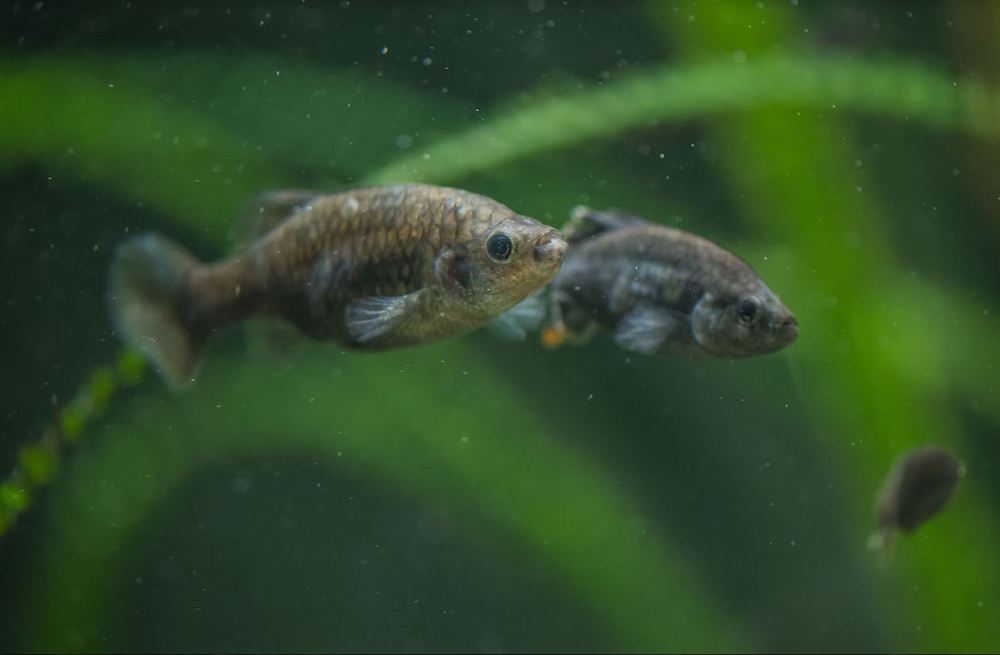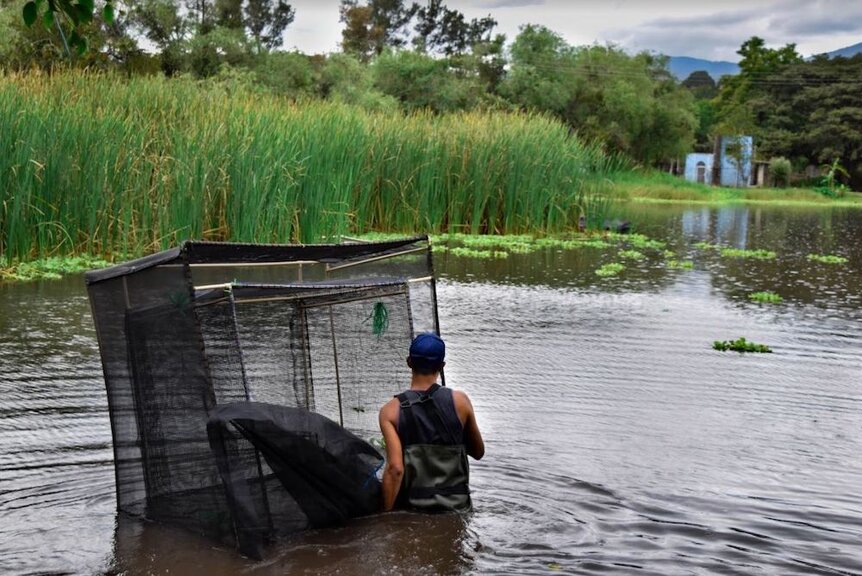Create a free profile to get unlimited access to exclusive videos, sweepstakes, and more!
The tequila splitfin fish was extinct in the wild, now it has a shot at returning
This is a comeback story for the ages.

Human encroachment into wild ecosystems, continued pollution, and the introduction of non-native plants and animals all come together to create the perfect soup for species extinction. Often those extinctions happen quietly without anyone noticing until it’s too late. Luckily, that wasn’t the case for one small fish species in Mexico.
The tequila splitfin (Zoogoneticus tequila) is a tiny fish measuring only a couple of inches in length which lives in the Ameca River basin in west-central Mexico. It takes its name from the nearby Tequila volcano, which sounds like a themed drink you’d regret ordering on vacation, but we digress. It might be more accurate to say it used to live there. The species completely vanished from the wild approximately 15 years ago.
Locals noticed the splitfin becoming sparser until eventually only prior generations remembered seeing it swimming in the rivers at all. The species avoided total extinction through collection from local aquarists who had individuals tucked neatly away in tanks. Those captive fish were, for a time, the only remaining tequila splitfin in the world.
The species was and is considered critically endangered by the International Union for the Conservation of Nature (IUCN) and a plan was put in place to maintain the species and hopefully restore it to its rightful place outside of tanks and back in the river system. Accomplishing this goal, however, proved a mighty task as the waterways in this part of Mexico had changed drastically in the time since the tequila splitfin thrived there.
Conservationists collaborated with local collectors to build a lab and gather a small population to live there for study and eventual release back into the wild. That the tequila splitfin would successfully breed in captivity wasn’t assured, it certainly isn’t the case for all fish species, but conservationists were lucky.
A small captive colony was set up in the laboratory of Aquatic Biology at Michoacan University of San Nicolas of Hidalgo. Within only a few years the fish were breeding, and the team began looking for ways to introduce them back into their natural habitat. Any reintroduction effort, however, must be undertaken with caution. Simply placing them back into their prior home, a home which resulted in their previous wild extinction, is a recipe for disaster.
Instead, in 2012 researchers crated an artificial pond to allow the fish a measure of natural existence while still exercising some control over the environment. Eighty individuals were released there, 40 males and 40 females, and they took to their new home with gusto. Within four years their numbers had grown to approximately 10,000.
Studying the fish in this setting allowed researchers to better understand the pressures at work for the splitfin, including parasites and predators, reproductive rates, and feeding processes. The team also made a concerted effort to educate the local community about splitfin conservation. They ran a successful campaign which transformed the small fish from a species at the brink of extinction to one which has become a part of the community’s identity. Within two years, 75% of community members asked were aware of the fish and the importance of their conservation.
The team then surveyed local river systems to quantify food stocks as well as potential predators including non-native species. They found that foods like phytoplankton and invertebrates were abundant, but so were non-native species which could threaten the reintroduction effort. Taking that information into account, researchers selected specific parts of the river for reintroduction, hoping to give the tiny fish the best shot at reestablishing themselves.
Reintroduction involved the total removal of invasive species from the targeted area as well as the removal of parasites from the reintroduced population. The whole process was labor-intensive but seems to have worked.
A part of the semi-wild population was moved from their artificial pond into floating cages inside the ecosystem proper. In six months, the population has grown another 55% and the tequila splitfin is now expanding into other parts of the river.
The fate of the tequila splitfin remains to be seen, but their story is one which clearly illustrates humanity’s power to damage ecosystems and our ability to restore them. That’s something which might be of increasing importance as we forge into the future.



























